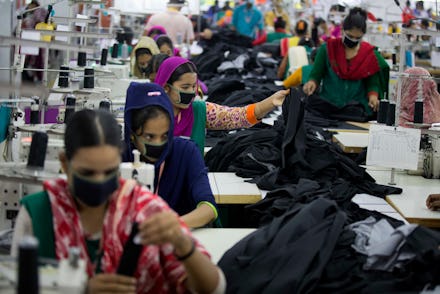Investigation reveals Amazon sells clothes made in exceptionally dangerous factories

Amazon is guilty of selling a “steady stream” of clothing manufactured in Bangladeshi factories that violate international safety standards, an investigation by The Wall Street Journal revealed on Wednesday.
A score of industrial manufacturing accidents in the region, like the 2013 Rana Plaza factory collapse that killed more than 1,100 people, prompted most of the international clothing brands that source goods from Bangladesh to vow to only purchase from compliant suppliers. Retailers like Walmart, Target, Gap, and Costco all agreed to honor the ban. But not Amazon.
A spokesman for Amazon told the WSJ that the company ensures products sold under Amazon-owned brand names are manufactured in safe factories by inspecting to ensure they’re following safety standards similar to those required by official monitoring groups. The WSJ acknowledged it couldn’t trace any products sold by Amazon-owned brands back to banned factories.
But the same can’t be said for wholesalers and third-party sellers who use the platform. The Amazon spokesman said the company essentially operates on the honor system and expects suppliers to follow international safety standards. But nothing in its agreement with third-party companies explicitly addresses those standards.
“If we become aware that a product is from a factory that may not meet our supply chain standards,” the spokesman told the WSJ, “we will remove the product from our store.” Several items exposed to be sourced from dangerous Bangladeshi factories, like a yellow embroidered toddler top, have already been removed from Amazon.
It may be the worst offender, but Amazon is hardly alone in facilitating the sale of goods made under inhumane conditions. The WSJ investigation exposes the many loopholes in online retail through which sketchily-made products enter the marketplace. Reporters found some of the same items sold by Amazon listed on Walmart.com, but mostly by third parties on the online marketplace Walmart developed to compete with Amazon’s already booming one.
Garments from one banned factory were also found on Target’s website; the company took those listings down and declined to comment after reporters brought it to their attention. The WSJ also looked into shipping records and found that Sears and Kmart, companies that both agreed to adhere to safety standards, have begun importing clothing from banned factories again.
If socially-conscious shoppers choose to buy from these retailers, it’s frankly hard to trace where individual products come from. Few listings on Amazon or Walmart show product codes, and they don’t show up on shipping codes.
Amazon has recently stepped-up efforts to enable factory owners to cut out the middleman and sell products directly on its site, which could make it easier for watchdogs to trace the origins of goods. But Faiaz Rahman, director of a Bangladeshi manufacturing group whose factories aren’t blacklisted, told the WSJ that when he began selling activewear directly through Amazon, the company didn’t ask for safety-certification information — until they entered talks to give Amazon the right to buy his brand. “Amazon is just the platform,” he said. “Anyone can sell anything.”
Unless corporations self-police or the government better regulates online marketplaces, the responsibility falls on consumers to make ethical purchasing decisions. But committing to knowing where your stuff was made and under what conditions can be a confusing and laborious process. If you want to make sure the things you put on your body don’t fuel human rights violations, the easiest way to do that is by shopping secondhand. It’s far more eco-friendly, too.